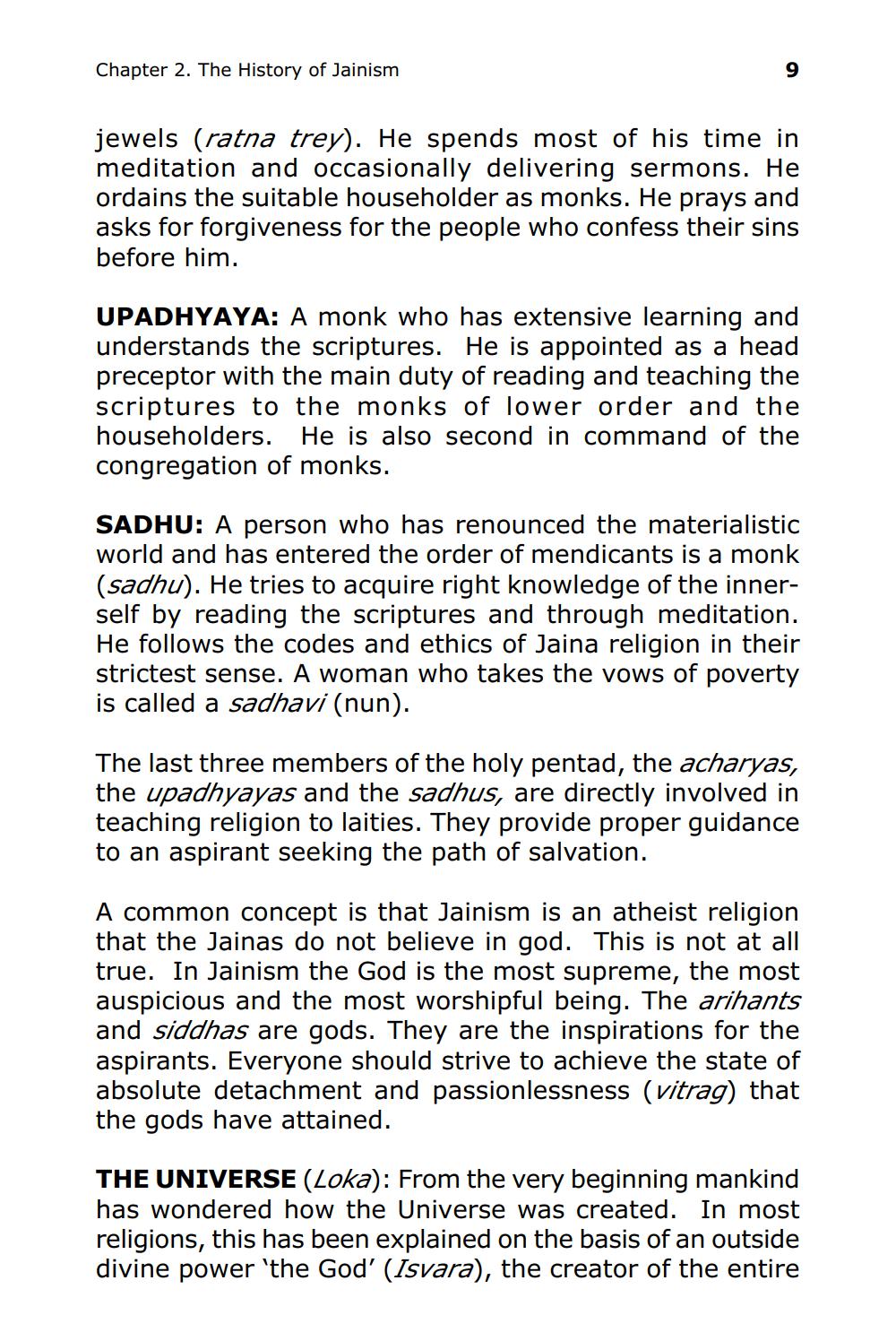________________
Chapter 2. The History of Jainism
jewels (ratna trey). He spends most of his time in meditation and occasionally delivering sermons. He ordains the suitable householder as monks. He prays and asks for forgiveness for the people who confess their sins before him.
UPADHYAYA: A monk who has extensive learning and understands the scriptures. He is appointed as a head preceptor with the main duty of reading and teaching the scriptures to the monks of lower order and the householders. He is also second in command of the congregation of monks.
SADHU: A person who has renounced the materialistic world and has entered the order of mendicants is a monk (sadhu). He tries to acquire right knowledge of the innerself by reading the scriptures and through meditation. He follows the codes and ethics of Jaina religion in their strictest sense. A woman who takes the vows of poverty is called a sadhavi (nun).
The last three members of the holy pentad, the acharyas, the upadhyayas and the sadhus, are directly involved in teaching religion to laities. They provide proper guidance to an aspirant seeking the path of salvation.
A common concept is that Jainism is an atheist religion that the Jainas do not believe in god. This is not at all true. In Jainism the God is the most supreme, the most auspicious and the most worshipful being. The arihants and siddhas are gods. They are the inspirations for the aspirants. Everyone should strive to achieve the state of absolute detachment and passionlessness (vitrag) that the gods have attained.
THE UNIVERSE (Loka): From the very beginning mankind has wondered how the Universe was created. In most religions, this has been explained on the basis of an outside divine power 'the God' (Isvara), the creator of the entire




